Anthony Metivier's Blog, page 18
December 2, 2020
Arthur Worsley On Getting Traction And Discovering Your Why
 It is no secret that we are all constantly in a state of self-examination.
It is no secret that we are all constantly in a state of self-examination.
While some people may be more “self-aware” than others, no matter where you are on the spectrum, there is a constant need, a persistent desire to “Know Thyself.”
The greatest task in that knowing, above all else, may be the biggest question, and, more complicated therefore, to answer, the question of “Why?”
Today, more than ever perhaps, we are being challenged to slow down, to examine our priorities, to reflect on who we are and what motivates us.
Whether that is an intentional choice, or the current state of the world has given you the gift of more time in the form of working from home and eliminating your commute, or governmental measures have encouraged a “safer at home” mindset, now is no better time for working towards that answer.
My guest today is Arthur Worsley. He is the man behind The Art of Living blog, the author of the TRACKTION Planner, and the Moments app. He is an entrepreneur, graduate of Oxford where he studied psychology, philosophy, and physiology.
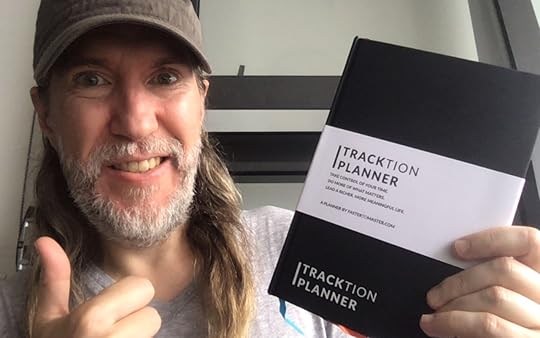
Thumbs up for the Tracktion Planner!
We discuss his mission of guiding others to find their motivation, through practical, executable, analog tools.
Arthur provides a real, honest look at a difficult situation that became his catalyst for self-discovery, and, through coaching, and his own journey, the roadblocks that others faced that were similar, and how they, and you, in turn, can also overcome them.
He even shares his own experience with answering that big question of “Why?” as he applied for Oxford. In his words, it was “terrifying” to see one’s future residing in such an empty space. The question of why was intentional, providing a blank canvas, open to interpretation.
He learned how to navigate and fill that space for himself, and with the tools and methods he has created, you can also learn to answer that all-important question of “Why?”
If you’re struggling to find your motivation for your everyday….
Or maybe the bigger challenge of your life’s purpose…
Just take note of where you’re starting from.
As you begin to answer that question, and, unavoidably, the others that arise, know you are enough.
That self-doubt? It can serve you. That questioning is good. That questioning means growth.
And why then wouldn’t we take that opportunity as we ask that very thing of ourselves?
Press play now above to listen in as Arthur shares:
How physiology, psychology, and philosophy can not only live in harmony as disciplines, but how they actually, in fact, intersect and can help you improve your focus
The evolution of the Pyramid of Needs for modern day society – what’s missing, and why
The gap that exists between effort (what you do) and motivation (why you do it)
What loss of religion means practically, and the problem that “lack of faith” can create
The reason behind the current resurgence of Stoicism, and what questions that philosophy can answer.
Why meaning must be found in purpose, and not purpose within meaning
The relationship (that’s necessary) between decision making and data collection
The pros and cons to the novelty effect
The most common reasons planners fail, and how you can overcome them with just a few simple tools
The problem with perfectionism and its relationship to procrastination
Why reading isn’t always beneficial – and how you may need to tweak your reading style (were you aware you had one?)
How problem solving can be addictive, and what mindset is required to achieve cyclical solutions
Why connection is such a critical why – even for an introvert
And even more!
Further Resources on the web, this podcast, and the MMM Blog:
Arthur Worsley on the Nomad Podcast
Optimizing Evernote and Other Productivity Software for Better Memory
Olly Richards on Crazy Language Learning Goals and Mastering Motivation
Dr. Bruno Furst’s You Can Remember: Does It Work?
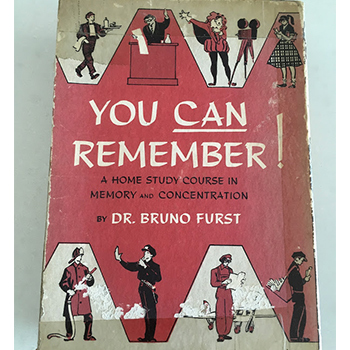 Dr. Bruno Furst created a number of memory improvement courses and You Can Remember! is one of the most famous.
Dr. Bruno Furst created a number of memory improvement courses and You Can Remember! is one of the most famous.
He was a German lawyer and his full name was Johann Franz Bruno Fürst.
People familiar with the long tradition of memory techniques will probably think he chose to go by “Bruno” to attract the attention of people already familiar with memory techniques.
It’s impossible to know, but I personally find it hard not to think about one of the most famous memory teachers, Giordano Bruno. Since “der Fürst” can mean “prince” or “ruler” in German, I have often wondered if the entire name is invented to say something about Giordano Bruno’s constant influence.
Given that this Bruno Furst fled Germany after Hitler came to power, this idea that he may have changed his name is plausible. Very little is known about him. The only Wikipedia page about him is in French and the New Yorker has their article about him locked in an archive. But the fact that he has a profile in that magazine gives us a clue to his prominence during his era.
The question is… does his memory training work?
The answer depends on you, your goals and your willingness to go on what Furst calls, “Adventures in Memory and Concentration.”
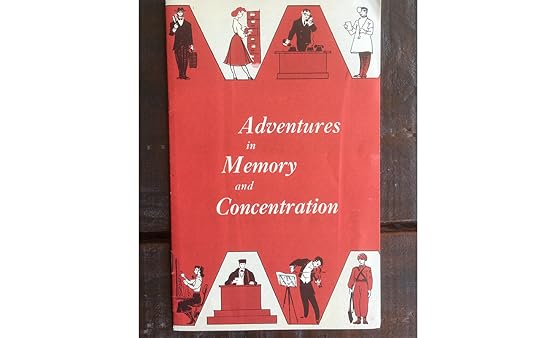
This printed pamphlet is an advertising piece designed to increase your desire to become a memory master. Notice the many dated professions and conventions of the era Furst was addressing.
This pairing of memory with concentration is important because you really can’t have one without the other.
The good news is that improving one naturally improves the other. So with that in mind, let’s take a deep dive into this flagship memory training from Dr. Bruno Furst. I hope you enjoy this You Can Remember review.
You Can Remember!: Everything You Need to Know
First, it’s important to realize that Dr. Furst recycled his material often. That means you might be disappointed if you already have these books:
Stop Forgetting: How to Develop Your Memory And Put It To Practical Use
The Practical Way To A Better Memory: A Simple, Easy-To-Use Method of Training Your Memory
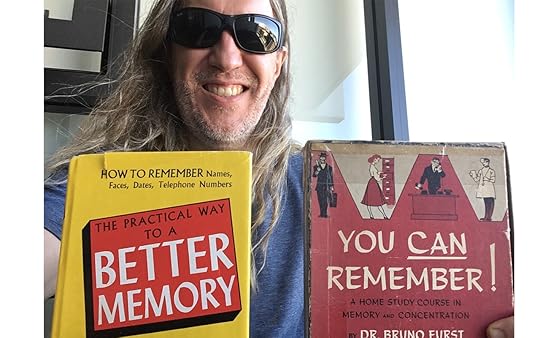
I love collecting memory books and courses. You Can Remember! by Dr. Bruno Furst is quite unique.
Although these books do have some differences in them, what makes You Can Remember! unique is a method of segmenting the different skills into ten sessions.
These sessions are split up into ten small booklets of about 30 pages each. The package comes with four separate envelopes, each packed with “examinations” or “model answers.” The exams typically ask you to spend 20 minutes reading a magazine. You then quiz yourself and self-assess your accuracy.

Inside, you’ll find simple questions on typewritten sheets.
Finally, the box comes with the “Number Dictionary.” This small booklet is packed with words that fit the Major System from 00-1000.
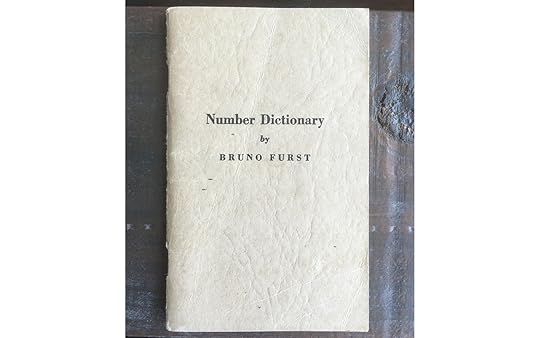
Overview of the 10 Sessions
Bruno Furst faces the same challenge all memory experts run up against:
There is no perfect place to start learning memory techniques.
But I feel that Dr. Furst made the best possible choice by starting where I also introduce students to the art of memory, with the Memory Palace technique.
Session 1:
In his work, Dr. Furst uses the terminology of his era: The Memory Checkroom. Instead of calling each stop in the Memory Palace a “Magnetic Station,” he talks about coat hooks, each with a number.
So that you can remember the numbers of each “hook,” you learn the Major System.
The session concludes with a test of how you interact your different hooks with daily chores.
Session 2:
Furst extends the Major System in this session and helps you extend it to three digits. He shows how you can use it to memorize “telephone numbers, price lists, addresses, formulas of every kind – in short, everything connected with numbers in practical life.”
The session ends with showing how flexible this number system is by sharing various mnemonic devices you can apply to different kinds of information.
A historic image of Dr. Furst shows that he likely taught even more advanced uses for numbers in his live training sessions. You see him with specially printed playing cards that include 3-digit numbers, for example, but I don’t know exactly what he had in mind for these. Encoding past 00-99 is not covered in any of his material I’ve read.
Session 3:
This session goes further with extending your Major System and explains how to remember prices.
Session 4:
Here Dr. Furst discusses applying the techniques to memorizing information from newspapers and short stories. You are given a number of still photographs to work with. You also go through scenarios where you might want to remember an anecdote and how your mnemonic devices can help trigger the memories.
Session 5:
Dr. Furst explains the different types of memories and then extends the techniques to memorizing faces and then names. He explains how to apply the techniques at parties.
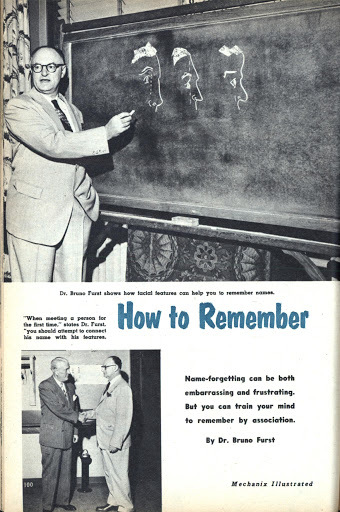
Dr. Bruno Furst discussing how to memorize faces.
Session 6:
Here, you learn the “chain method,” which is essentially the same as the link and story method. He touches on how to use this method to memorize a speech.
Session 7:
In this session, Furst covers memorizing historical dates, geography and memorizing contest winners and information related to the tax code. This is probably one of the most dated parts of the Bruno Furst memory program, especially since there have been many advancements in how to use memory techniques in the past decade alone.
Session 8:
Dr. Furst starts ramping things up in this section by discussing adding facts to people. He discusses remembering names when you don’t actually know the person (such as artists, authors, historical figures, etc). You also learn how to tackle memorizing scripture and the US States.
Session 9:
By this point, Dr. Furst figures you are ready for some of the next-level techniques. Here, he introduces using classification systems to improve your memory. For example, if you need to memorize a bunch of items on a tray, you would isolate all the musical instruments into a category.
When exactly anyone would need to do this outside of working for airport security is unclear, but this technique does relate to what we call the Conceptual Mode in the Magnetic Memory Method Masterclass. His introduction to using this kind of “mental division” is worth practicing even if the examples he gives don’t relate to many real world applications.
One approach that still is potentially useful involves his discussion of using the Dewey Decimal system. This strategy is compelling and with a more robust approach to the Memory Palace, it’s quite easy to see how one could “nest” a number of them together using this categorical system.
This session is one of the most important and it’s curious that more of this material doesn’t appear in the introduction. Furst waits until nearly the end to stress the importance of goal setting, planning and exposes the truth about creativity. (The truth is that real creativity in memory training involves bringing together preexisting elements, not “inventing” new imagery and associations.)
Session 10:
You learn how to memorize a deck of cards in this session and a few routines you can use to stun your friends. The course ends with Furst stressing the need for ongoing practice in order to maintain the skills you’ve gained.
Can Bruno Furst Help You with Memory Improvement?
If you’ve been following this blog for any period of time, you know that I feel more is better than less. “One,” as I often say, “is the most dangerous number” when you’re learning any skill. You want multiple teachers.
But whether it’s Mega Memory, Pmemory or something by one of our contemporary memory competitors (like Nelson Dellis), you should think about a few things before deciding.
Historical recency. Furst refers to dated newspaper formats, hairstyles that are no longer in fashion and checkrooms that one rarely sees anymore. If you’re a certain age, these examples won’t bother you. But there’s nothing about dealing with the Internet or information overwhelm. Dr. Furst couldn’t have even imagined what students of today deal with and this book shows it. (That said, the amount of techniques he covers is impressive and they’re all still relevant to today’s era.)
The examples are incredibly vague and generic. We know so much more about multisensory, concrete associations these days. You will likely struggle if you use examples that may have worked for a few people in his era.
Bad advice. Furst talks about not using rhymes for a reason that doesn’t really make sense and tells you to repeat names in conversations, which is not strictly necessary when memorizing them. He also seems to assume that everyone is an extrovert.
He breaks learning a 00-99 PAO over 10 sessions instead of just focusing on this particular skill. He may have had the learning technique called “interleaving” in mind, but I doubt it. This strategy might reduce the cognitive load of developing your Major System, but you wind up switching topics many times and he never quite develops a solid use case as he might have by gathering this mnemonic strategy in one place.
The History Of Memory Techniques
Personally, I picked up these books and the You Can Remember! course to better understand the history of this beautiful tradition.
Like Kevin Trudeau and Harry Lorayne, Bruno Furst was more than a memory teacher. He was a great marketer. The course I ordered came packed with the original advertising and it’s clear that Furst knew just how much convincing many people need in order to give these techniques a try.
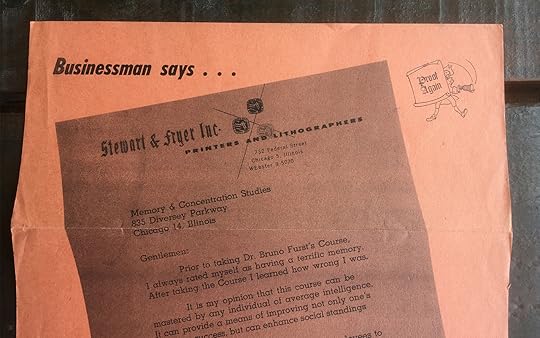
Testimonials for Bruno Furst came with You Can Remember! to help remind new students of the value in the program.
The use of testimonials and what he calls “proof again” testimonials and offers for free training shows that he was devoted to “education-based advertising.” Although nothing in his marketing offers the kinds of “results in advance” we focus on in the Magnetic Memory Method world, it is inspiring to see the effort that went into these “listicles via mail.” There is also an “advertorial” in Maclean’s where he teaches the Major System in passing.
It is not known whether Dr. Furst wrote these advertising materials himself, but they strike me as coming from the same author. I get this feeling because the memory training itself is written to encourage you take action, and this is common across all memory training programs. If you want, as Dr. Furst puts it, to “make more friends, and acquire greater popularity at social gatherings,” you have to take action.
As I have done for years, he urges the learner not to be content with the examples he gives. The imperative to “try the system immediately in your daily life,” comes up as a mantra, and I agree that it needs to be repeated often. He correctly stresses that “every human activity rests in some way on memory” and shows how improving memory leads to great efficiency and pleasure in life.
Finally, it is worth noting how Dr. Furst brings memory training together with general self help. When talking about classification, he talks about applying this mnemonic strategy to your goals. He suggests breaking your five year plan into categories like your business or work, social life and family recreation.
Practical, But Dated Memory Training
As I mentioned at the beginning, there is no perfect way to start your memory training journal. But if you want to split things across ten learning sessions and can get hold of You Can Remember!, I have no problem recommending it.
Even where there are certainly aspects to the program I could complain about it, Furst knows his stuff and his own goals are in the right place. As he says, “Every advance in civilization and every step in cultural progress rests in the last analysis upon memory.”
This fact remains true and those of us who love memory techniques owe a debt of gratitude for his work, whether we go through his material or not.
November 19, 2020
How to Become Fluent in a Language: Everything You Need to Know
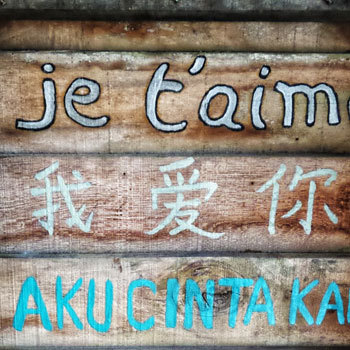 If you want to become conversationally fluent, you might wonder how many words and phrases you need to learn.
If you want to become conversationally fluent, you might wonder how many words and phrases you need to learn.
You probably also want to know how long it’s going to take to tie enough threads of the language together to speak without hesitation.
You also want the certainty that the language will in fact wind up deep down inside you and become part of your being.
On this page, you’ll discover the best way to become fluent in a language — and how to define fluency in the first place.
It’s not exactly what a lot of people think. In fact, when you define “fluency” in the best possible way, you can achieve goals in the languages you want to learn with incredible speed and efficiency.
https://www.youtube.com/watch?v=I2TOa...
Here’s what this post will cover:
What Does It Mean To Be Fluent?
The 5 Stages of Language Fluency
When Are You Fluent In A Language?
How To Become Fluent In A Language Fast: 8 Powerful Tips
Becoming Conversationally Fluent Is Easy And Fun
What Does It Mean To Be Fluent?
Let’s start our definition by ruling out what fluency isn’t.
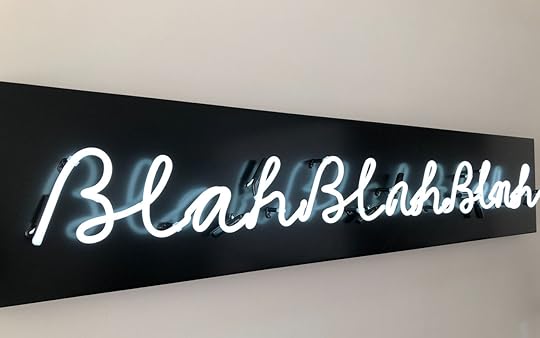
Fluency is not:
Being 100% accurate every time you speak
Knowing every single word in a language
Mastering grammar
Think about your own mother tongue.
Do you say things 100% perfectly every time you speak? Of course not. We all stutter sometimes or forget simple words we’ve known our entire lives.
Likewise, any honest person who looks through a dictionary will find hundreds of words they do not know in their mother tongue.
As for grammar, I remember showing off in German to my friend Olly Richards in Berlin several years ago.
When I asked someone I was speaking to if my grammar was correct, the native German speaker shrugged and looked at me as if I was insane for asking such a question.
Here’s the point of this story about asking a native German speaker if my grammar was correct:
Very few native speakers actually know much about their mother tongue. And that means in order to become proficient in a language, you don’t have to either.
The Better Definition You Need When Becoming Fluent In A Language
A better definition of fluency is this:
The ability to complete goals while using another language.
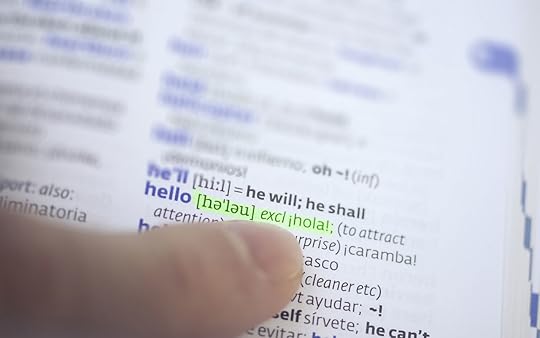
And the main goal?
To use words and phrases to:
Convey thoughts, ideas, emotions, or commands
Understand thoughts, ideas, emotions, or commands
Ideally, you’ll be doing this in pleasant interactions with people you enjoy speaking with — though this is not necessarily always the case.
For example, I’ve dealt more than a few times with immigration offices in Germany. I spoke in German and was able to convey and understand the necessary details in order to accomplish goals completely using German. (But it was not my idea of fun.)
The 5 Stages of Language Fluency
As you start learning a language, you’re going to go through phases or stages.

These can be broken down into:
1. Zero knowledge of the language.
You literally don’t know a thing. You might not even know what the language is called in the language you’re learning. (For example, German is called Deutsch.)
2. Basics of the language, like the alphabet.
In different languages, you’ll face different demands depending on the character set and any symbols you need to learn. Obviously, Asian languages have bigger demands than Russian with Cyrillic, or you might lose a few letters when learning a language like Italian.
3. Starting to speak.
In this stage, you will perhaps have a few words and phrases you can use. You may be practicing entirely on your own or with a teacher.
4. Reading, writing, speaking, and listening.
In this stage, you’ll ramp up your efforts by using what is called The Levels Of Processing. You need to combine multiple forms of input and output in order to consolidate what you’re learning.
5. Flying solo.
This is when you are able to hold conversations that flow — or at least accomplish goals. You’ll usually find this incredibly pleasurable, but all that matters is that you can understand and be understood pretty much on demand.
You can start understanding interesting aspects of a language at all of these levels. You really don’t have to wait for the fifth stage to understand innuendo, for example. Even just knowing a bit about how certain letters are sounded can give you access to the psychological experience of the language.
You can also work on your accuracy at each stage. In fact, you’ll want to keep coming back to hone the accuracy of each stage over time.
For example, I’ve been studying Sanskrit for three years, and I still learn new things just about the alphabet.
When Are You Fluent In A Language?
How long does it take to become fluent in a language? The answer to this question is either 1) up to you or 2) based on a test you take to assess your progress.

In Europe, you might consider being tested based on the CEFR levels. For a language like Chinese, you might take a formal test based on HSK 1-6. (When discussing how to learn Chinese, I give an example of a journey to passing level 3.)
I suggest you find a “sweet spot” between your own definition of fluency and an external exam.
Again, native speakers rarely know their mother tongue all that well at a technical level, so you probably want to judge the fluidity of your conversations and the ability to accomplish goals in the language above all.
Studying to complete tests can be very useful along the way, but ultimately life itself is the real test.
How To Become Fluent In A Language Fast: 8 Powerful Tips
You came here to understand how to learn a language fluently, so let’s get into 8 things you can do to reach fluency fast.
1. Create a Vision Statement and a Learning Plan
Realize that there are good rules of thumb but no one path that suits everyone. It’s important to accept this simple fact.
Your journey will share some common characteristics with other learners, but ultimately it’s your path to follow.
To ensure you have a path to follow, I suggest you write out a Vision Statement and craft a learning plan.
https://www.youtube.com/watch?v=MFz31...
For example, you can get a journal to document your journey and start on page one with a statement like this:
I will be fluent enough in German in 90 days from now to hold my first conversation about my interests and future plans.
Can you see how powerful this simple statement is? Instead of saying, “I want to learn German,” (or whatever language you’re learning) you now have a clear and crisp goal. It is concrete and specific.
You can also develop a plan based on this goal thanks to its specificity. You know that you need to learn words and phrases around interests and plans. This allows you to create highly targeted learning missions.
To do that, I suggest writing out the exact times of day and locations you will study your language.
For example, you can create a calendar in your journal and set mornings from 9 a.m. to 10 a.m. for learning.
2. Gather the Best Possible Learning Materials Using Limits
A lot of language learners overwhelm themselves with too many study materials. In today’s world, it’s easy to make this mistake — it seems like every minute there’s a new book or course you can take.

Instead, follow the advice my friend Olly Richards gave me years ago. Pick just:
One language textbook
One language course
One language teacher
In the beginning, you might not know which are the best for you, so be willing to experiment. Generally, your research will be worth every minute and there are lots of reviews you can read.
Personally, I think Pimsleur audio programs are decent in the beginning for the course you choose. A book should have a nice vocabulary list and sample conversations with full phrases. And a teacher should be responsive to your vision statement and your learning plan.
Simple, right?
It is, just so long as you don’t fall for “shiny new language resource” syndrome and abandon the resources you’ve already invested in. Be a completionist and you’ll be well rewarded.
3. Pick a Memorization Strategy
When you’re just getting started, remembering new words is one of the most difficult challenges. You have to remember sound, meaning, spelling, and in some cases characters or new alphabets.
Mnemonics are your best bet for moving quickly. These include:
The Memory Palace technique
Story and linking methods
Pegword method
To learn each of these in one swift course, please consider completing Memory Palace Mastery:
You’ll also want to consider combining the Memory Palace technique with self-created flash cards.
For example, these cards have linking associations and are themselves linked to a Memory Palace:

4. Book Sessions With Your Teacher In Advance
As part of planning your personal learning sessions, it’s important to spend time with a native speaker.
There are at least two ways to do this:
With a paid teacher
With a tandem partner
Personally, I recommend you get a paid teacher. Sometimes you can find good tandem partners, but they always want at least half the time for their language. Plus, they are rarely trained teachers.

That said, paid teachers are not without their pitfalls. This is why having your vision statement and specific goals laid out for them is a must. Otherwise, they will often take you in directions that will not get you to fluency under any definition.
And the reason to book your sessions in advance is so you have them scheduled. When you have already paid and just need to show up, you’re much more likely to put in the time.
For finding teachers, I recommend italki and Tandem.
5. Use This Tip With Native Speakers
One of the best things you can do is book many sessions with a native speaker and sit with a magazine. Flip through the pages and simply ask, “What is that?” Repeat this question and record everything.
I share a really fun and easy tool for doing this in this best language learning software article.

When you get home or after you end the session, go through the recording and capture the words and phrases you want to commit to memory. Then use your favorite memory strategy to learn them permanently.
When you next speak with your partner, make sure to repeat the new words you’ve learned. Don’t expect your teachers or speaking partners to always monitor this perfectly. Take charge to make sure that you are in alignment with your vision and goals.
6. Read Stories
I first read Kafka and Brecht in German while in university, in 2001. I quickly learned the power of stories for picking up new vocabulary and phrases.

Of course, Kafka was too complex. But Brecht plays can be watched on video with English subtitles, and this made audio exposure to the language a delight.
You can also buy DVDs that have subtitles in the language you’re learning. Watching Hamlet with the German words on the screen was hugely beneficial for me.
But don’t ignore old fashioned books. I suggest this Teach Yourself collection of stories for multiple languages as a wonderful source of graded reading material.
Beelingua is an interesting app with multiple stories that you should consider as well.
7. Translate Articles Based On Your Interests
My friend Luca Lampariello got me into the idea of translation for language learning — specifically based around topics you’re interested in and want to be able to talk about.
I’ve done this quite a bit, and picking a book of interviews with my favorite German band was a great way to develop speaking powers with the kinds of Germans I hung around with most: musicians.
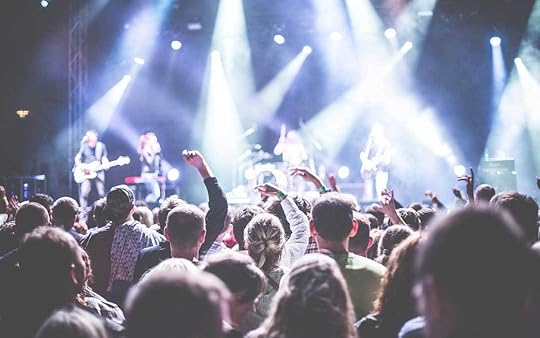
Again, if you’re clear about your vision, it’s easier to think up missions like these and plan them out.
To get started, try using Google translate to find some keywords. If you’re into classical music, for example, figure out how that is said in the language you’re learning. Then search Google for articles about that topic using the term you discovered.
To translate, I suggest going word for word with a dictionary. Write out your translation by hand, which is known to help memory much more than typing.
Pro tip: I recommend that you don’t spend too long on any translation effort in one sitting. 10-15 minutes will do. Always take note of especially interesting words and phrases so you can memorize them.
8. Reevaluate Your Vision Statement And Craft New Missions
Thanks to the focus you’ve brought to the task of developing your fluency, you’ll have come a long way much faster than most who dabble in language learning.

As you set new vision statements over the years, think about the kinds of missions and goals you can set that will give you a useful boost immediately. This part of the process is important because the further into the future you set the achievements, the more you invite delay and frustration.
Be willing to break things down into smaller achievements. Even if the rewards are much smaller as a result, you’ll get more of them, more often.
And always be realistic about how native speakers actually use the language you’re learning. Think more about the kinds of people you want to speak with and think about working on missions that reflect goals like:
Improving accuracy in a regional dialect you live in or want to visit.
Developing more vocabulary inside of a specific interest area (like art, science, or philosophy).
Develop personal ways to develop your proficiency.
Consider having your accuracy and proficiency tested by external tests (if relevant to your goals). Use these to craft your missions accordingly.
In sum, we always want to create “Quick Victories” for ourselves.
It’s not really about creating motivation. Rather, it’s about laying the neurochemical basis for learning consistently so we always keep going – almost on autopilot – even when we don’t feel like studying. (Which can and will happen to everyone.)
Finally, add a bit of “Zen” to the process. By this suggestion, I mean let go of the outcome.
A lot of learners chase away success because they cling to unrealistic goals or otherwise make a poorly conceived outcome a must. When you can relax and focus on having fun, learning a language is not only more fun and much easier, it also feels like it’s just happening naturally.
As some people say, no one “learns” languages. They are only acquired. For that to happen, you just have to rig the game so you can.
Becoming Conversationally Fluent Is Easy And Fun
As you can tell, the exact definition of “fluency” is flexible. I suggest you mix things up by crafting your own personal standard and working towards at least one external evaluation.
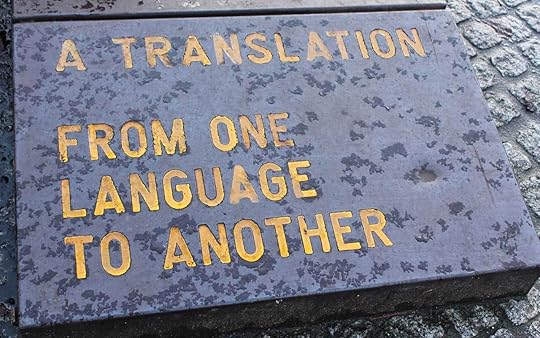
Whatever you do, please don’t confuse using apps as actual language learning practice.
I haven’t included anything about them in this article because they’re not really how successful language learners operate. At most, they might use Anki or some related SRS program, but I have found in my many years of speaking with polyglots that it’s not the tool.
Instead, it’s the strategic use of the tool in a context that gets you plenty of speaking practice with real humans that matters.
When it comes to making sure you can speak with natives, one of the most powerful tools is the Memory Palace technique. It lets you rapidly pile up your arsenal of words and phrases.
If you’re interested in learning more about how to use it for language learning, register for this free training series now. It will take you through the most effective and efficient way you can learn any language much faster, simply by playing a kind of game in your mind as you use a focused set of resources.
It’s also the best tool I know of for rigging the game neurologically in your favor because of how it gives you those “quick victories” practically on demand.
Plus, we have studies that show how powerful these techniques are for experiencing the brain-preserving benefits of bilingualism.
And let me know: Which of these tips helped you the most? What language or languages are you learning at the moment?
November 18, 2020
Focus Your Mind: 3 Powerful Concentration Secrets
 Do you need to focus your mind?
Do you need to focus your mind?
And while you’re at it, would you like to increase your concentration power?
If so, I have 3 simple tips for you that are more powerful than a fistful of focus vitamins or a scientifically questionable brain training app.
And I’ll even reveal what happened when I was attacked personally in an examination and needed these tips in order to keep focused so I could get my Ph.D.!
Want to know the focus secrets that will help you perform even under the most hectic of situations?
Here’s what this post will cover:
1. Focus Your Mind on the Body
2. Focus Your Mind on the Breath
3. Focus Your Mind… on the Mind?
How Do You Mentally Focus?
1. Focus Your Mind on the Body
https://www.youtube.com/watch?v=Y-zTk...
Did you know that you can’t effectively work on your mind without also working on your body?
It’s critical to start here because a lot of people think their mind is somehow different than their body. In fact, your mind is produced by your brain, a clump of physical cells located in your skull.
The quality and health of these cells directly shows up in your ability to focus and concentrate.
To start improving, learn to relax your body every time you sit down to study. You can do this by performing muscle relaxation exercises, breathing exercises, and daily meditations.
Let’s look at how to combine all three in a quick morning ritual:
Get a foam roller or lacrosse balls to help relieve shoulder pain
Use trigger point therapy to get knots out of your shoulders
And release a tight IT band
(Be sure to check with your doctor or a physical therapist before taking on any new exercise or physical program.)
I have been using rollers like these for years, and they really set the stage for much greater mental focus than I thought possible.
We all hold far too much tension in our bodies, and this is a simple way to help release a TON of it.
Perform these exercises every day for five minutes before you read or study, and you will undoubtedly note a huge difference.
And if you are a student attending lectures on campus, consider getting a therapy massage cane — you can easily put it in your backpack along with your lacrosse balls for use before lectures.
If you can’t carry such items with you, a simple body scan and deliberate squeezing of your major muscles is another possibility.

For example, before I sat for my dissertation defense – arguably the biggest exam of my life – I moved from my feet all the way up to my forehead, squeezing and releasing my muscles. No one noticed at all, and I waltzed into the room completely relaxed.
In addition to muscle relaxation, I had two other secret weapons that enabled me to focus in the heat of battle where I was attacked personally and managed to do better than survive. Thanks to relaxation and memory techniques, I recited quotes and page numbers and pulled all kinds of abstract knowledge from my head.
In fact, even after I was grilled intensively and even aggressively by one person on the committee, the head examiner said, “Anthony, the only guy cooler than you is Miles Davis.”
What was my second secret weapon?
2. Focus Your Mind on the Breath
My second secret for how to focus right now is breathing.
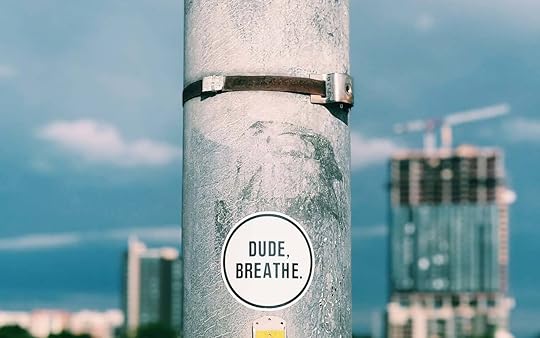
My favorite breathing exercise is called Alternate Psychic Nostril Breathing.
It’s called “psychic” because you imagine in your mind that you’re inhaling through just one nostril — unlike Alternate Nostril Breathing, where you actually use your hand.
But I didn’t have the concentration and focus skills for that level of kinesthetic visualization in the beginning. So I just started with the regular version.
When you’re ready to switch over to the “psychic” version, just pretend that the nostrils are blocked as you go back and forth. With practice, you’ll find that you can do it all day.
And even if you don’t, you can drop back into it during a moment of tension or stress.
For example, when I was told during my doctoral dissertation that an entire chapter I’d written on Nietzsche had no Nietzsche in it, I didn’t get stressed or choked or panicked.
I just squeezed the muscles in my hands and feet and imagined I was inhaling only through my right nostril and out through my left. By that point, I’d been practicing the technique for a while, which is why it took such immediate effect.
Don’t expect to try it once and suddenly be as calm as a Shaolin Monk!
After this examiner made this accusation and I’d quickly centered myself, I calmly remembered the page number my Nietzsche chapter started on and asked everyone to turn to that page.
Then I quoted Nietzsche in German, one of the most important passages he wrote about friendship, which I’d written about in my dissertation. That quote helped me establish the theoretical grounding I’d laid out, not just in that chapter, but throughout the massive document everyone was now focused on.
But I didn’t have to look because I knew exactly what I’d written and exactly where in the document the passage was located.

One thing I was reminded of that day: people attack each other for a reason, and one of them is because they know how easy it is to break your focus and cause you to make mistakes.
But I don’t care. All that matters is that I was prepared by practicing these focus and concentration techniques.
One key to my success with these focus strategies is to be F.R.E.E. That is, literally:
Frequent practice in a state of…
Relaxation and a spirit of…
Experimentation and always letting these focus and concentration rituals keep you…
Entertained
These two strategies I’ve shared so far using the F.R.E.E. model – when practiced in advance – will help ensure that you’re not so quickly shaken. You might not be “as cool as Miles Davis,” but at least you’ll be moving in the direction of calm focus, cool clarity, and modesty too.
Anyone who has the first world problem of focus and concentration issues while attending university (or reading books they bought off Amazon) can also bring in a bit of gratitude as a strategy too.
Most of us just don’t realize how blessed we are. And that’s because we lack observation skills. This leads us to the third strategy for greater focus…
3. Focus Your Mind… on the Mind?
Let me cut to the chase:
There are lots of kinds of meditation, and tons of confusion out there. I won’t pretend to know the best kind of meditation for you, because it’s not as simple as systematically relaxing your muscles.
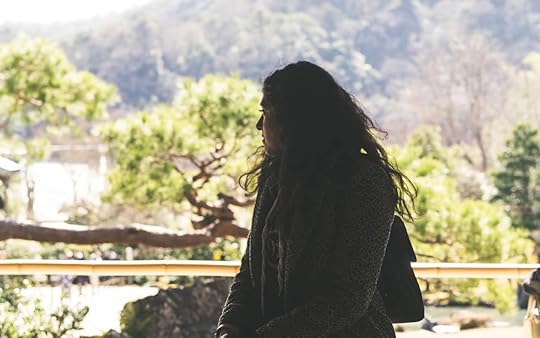
But we do know that scientists have found that four times a week minimum is required for greater focus and concentration effects to take place. These don’t have to be hour-long marathons, either. Just ten to fifteen minutes of meditation will do.
I suggest that you do some muscle relaxation and breathing first, and then just set a timer. Tim Ferriss advises that you should set your timer for two minutes less than you think you can sit for.
For example, if you think you can sit for 10 minutes to just watch your thoughts, set it for eight.
And that’s really all you need to do in the beginning. Turn off all the apps and other distractions. Sit just to sit.
There are a variety of meditation techniques – including concentration meditation and visualization meditation – so try them on for size and see what works best for you.
One of my favorites on Gary Weber’s channel is his Kirtan Kriya practice.
https://www.youtube.com/watch?v=ehvok...
This simple meditation has been shown to help with memory, focus, and concentration. Kirtan Kriya also enables you to bring in a small amount of movement and sound. It’s also a step in the direction of longer meditations where you work with self-inquiry questions.
But remember, research shows that you’ll want to practice at least four times per week to notice an effect.
And be flexible with yourself. I have bad shoulder impingement issues and bursitis and sadly can’t sit for long meditations at the moment. I have to lay down instead or do them while walking.
But thanks to muscle relaxation, breathing, and meditation, the pain is just something that appears in consciousness. And it’s a heck of a lot less painful than having a bratty professor in the room who just wants you to fail.
And like that professor, both those attacks and this shoulder pain are something frequent meditation helps me simply observe, without getting emotionally tied up in them.
Things in the world are just like waves of the ocean, rolling in and rolling out. They really don’t disturb the shore, which gets stronger and stronger the more you practice these three techniques.
Before we wrap up, I have one more suggestion to help you focus your mind.
How Do You Mentally Focus?
If you’re having a hard time getting little rituals like these into action, here’s the solution that works best for me:
Do all of these three exercises for better focus before you turn on the computer in the morning or look at your phone.
Sometimes I’m not successful at doing that every single morning, but usually I am. If you’re new, even just a 20% success rate across a few weeks is a start.
You can put your phone in a cupboard and make sure your computer is completely turned off. Designate a room in your home or spot where you can focus just on rolling out your muscles, practicing your breathing, and meditating.
Anchor this place in your home with a mental image like the Buddha or Alan Watts, Gary Weber, or something you find peaceful like a tree or flower. Then go to that spot and practice.
Later you can open the great avalanche of the connected world, and you’ll enjoy it with much more focus, concentration, and gratitude because you’ve completed these simple exercises.
And if you want to learn more about my memory techniques – including meditations to help you focus your mind – grab your copy of my book, The Victorious Mind.
November 9, 2020
How to Remember The Planets: A FAST & Simple Method
 The center of our solar system is the sun. Moving out, we encounter…
The center of our solar system is the sun. Moving out, we encounter…
Mercury. Venus. Earth…
But wait. There’s more than one planet that starts with M.
What’s the difference between Uranus and Neptune?
And what the heck happened to Pluto?
If you find yourself wondering how to remember the planets, you’re in luck.
When you need to know how to remember the planets in order, there’s an easy (and fun) way to memorize them.
You can use an acronym or acrostic. But I recommend using the Memory Palace technique or method of loci.
Why?
There’s no perfect mnemonic for the order of the planets
You can use the planets themselves AS a memory palace!
But before we get ahead of ourselves, let’s look at what this post will cover:
Eight Planets, Or Nine?
Acrostic or Acronym to Remember the Planets?
What Else Can You Use as a Memory Palace?
Ways to Remember the Planets with Ars Combinatoria
Solar System Mnemonics
Make a Memory Palace With the Planets in Order
What Are the Best Ways to Remember the Planets?
Ready to remember the planets in order? Let’s get started.
Eight Planets, Or Nine?
Back in 2006, Pluto was reclassified as a dwarf planet.
You might not think something as simple as a planet at the very edge of our solar system could be a source of outrage, but the reclassification ruffled feathers around the globe.

According to NASA, “Pluto isn’t considered a planet because it hasn’t cleared the neighborhood around its orbit of other objects.”
So let’s just say – whatever your opinions, thoughts, beliefs, or fantasies about what a planet is or isn’t – that Pluto isn’t a planet. We’ll leave NASA in charge of the classification and leave the Pluto question out of today’s discussion!
The good news is, the techniques in today’s post can extend to any and all astral bodies.
And if you want to go even further, you can combine the power of the Major Method and using Memory Palaces to memorize vocabulary to memorize anything in our sky.
These techniques will work for you whether you want to memorize:
The order of the planets in our solar system,
Stars, moons, and dwarf planets,
Spacecraft, astronauts, and astronomers, or
Celestial bodies in galaxies far away.
And if you want to learn more about our solar system, I highly recommend The Planets — a companion book to the BBC series. According to the publisher, “Andrew Cohen and Professor Brian Cox take readers on a voyage of discovery, from the fiery heart of our Solar System to its mysterious outer reaches.”
Now let’s look at one of the first ways people usually learn the planets in order.
Acrostic or Acronym to Remember the Planets?
For the purposes of today’s post, we’ll stick to memorizing the order of the primary planets in our solar system, in order from closest to furthest away from the sun.
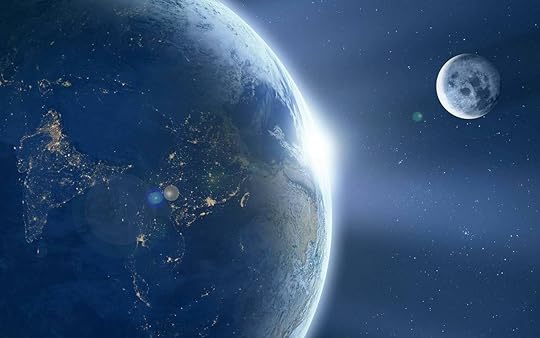
What if you could take a “backpacking” tour of the solar system as part of your quest to understand how to remember the planets in order?
Or, you could use an acronym to remember the planets… but MVEMJSUN isn’t a very sensible one, right?
Instead, what if you used an acrostic? An acrostic is a poem or composition that uses certain letters in each line to form a word. So for our planets, we might see acrostics like:
My Very Educated Mother Just Served Us Noodles.
A fun brain exercise is to think of as many different acrostics as you can using the first letters of each planet.
Quite frankly, I think acronyms and acrostics are not good ways to remember the planets. It just doesn’t make a lot of sense, in my view. And I believe we can do better!
I think that we can do it in a way that allows us to turn what we do to memorize the order of the planets into a memory palace.
In fact, it’s not just the planets you can use to create a memory palace — let’s look at your other options.
What Else Can You Use As a Memory Palace?
In the image below, we supposedly see Giordano Bruno looking out beyond the known solar system to imagine all the stars that lay beyond.

Photo credit: Flammarion woodcut of Giordano Bruno
I particularly enjoy the work and writing of Bruno, and have incorporated him into a series about the Art of Memory on YouTube.
His book De Umbris Idearum and Ars Memoriae: On the Shadows of Ideas & the Art of Memory (as well as other works) talk a lot about the stars and the constellations, and how to use them as memory palaces.
If you go on to read The Hermetic Art of Memory by Bruno’s student Alexander Dicsone, you’ll discover a means of using the mansions of the moon as Memory Palaces.
In part two of the Art of Memory playlist, I show you the quote where Bruno essentially tells us (here I’m paraphrasing), “My solutions are just examples. Go your own way. Make your own mnemonic examples. You don’t have to memorize what I have memorized or use my tools…”
And if you really want to understand The Art of Memory you do need to understand something about the stars, what Bruno may have done with them, and what this practice is all about.
https://www.youtube.com/playlist?list...
Our takeaway from him is that we can use whatever symbols or objects we want in order to create a memory palace — so why not include the solar system as a memory palace to remember the planets in order?
As we’re preparing to use the solar system to create a memory palace, we also need to discuss mnemonic devices for the planets. And this requires a little bit of discussion of Ars Combinatoria.
Ways to Remember the Planets with Ars Combinatoria
Ars Combinatoria translates to the “art of combination.” If you do a bit of research about it, you’ll find this definition on Wikipedia:
“All concepts are nothing but combinations of a relatively small number of simple concepts, just as words are combinations of letters. All truths may be expressed as appropriate combinations of concepts, which can in turn be decomposed into simple ideas, rendering the analysis much easier. Therefore, this alphabet would provide a logic of invention, opposed to that of demonstration which was known so far.”
We won’t dive too deep into Ars Combinatoria today, because it’s what I would call hidden-lost.
Bruno was fascinated with the Catalan philosopher and theologian Ramon Llull (c.1232–1316) and some of the apparent contradictions around Ars Combinatoria. But without a time machine to go back and talk to these great philosophers, we get to reconstruct how they came about their discoveries.
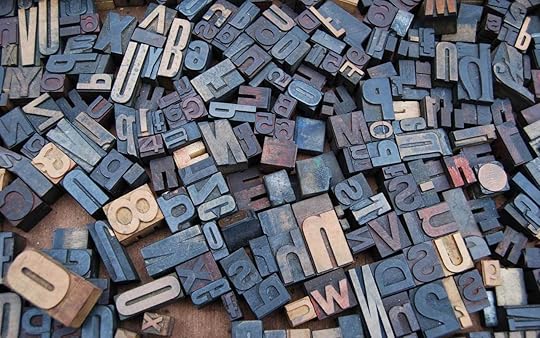
Instead, let’s look at something called the “coach effect” as an example.
You can see this in lots of realms — sports, screenwriting, etc. The coach effect is that sometimes people are experts at getting performance out of other people, but can’t do it themselves.
For example, when I was a story consultant it always amazed me how the best story consultants could get paid a million dollars to tell you what to fix about your screenplay… but they couldn’t write a screenplay to save their lives.
They’re story mechanics who understand the topic so deeply but can’t operate on the other side of the pen.
There is probably no other way for anybody to achieve the highest possible level except through Ars Combinatoria. If you’re feeling a bit lost with these concepts, be sure to sign up for the free memory masterclass to get the base knowledge necessary to be successful.
Next, let’s work on the first step of our solar system memory palace: mnemonics.
Solar System Mnemonics
In our efforts to learn the planets in order (and make a memory palace out of them) let’s start with the planet closest to the sun and work our way out into the solar system.
Mercury
The closest planet to the sun is also the smallest. And the sunlight there would be up to seven times brighter than we’re used to here on earth!
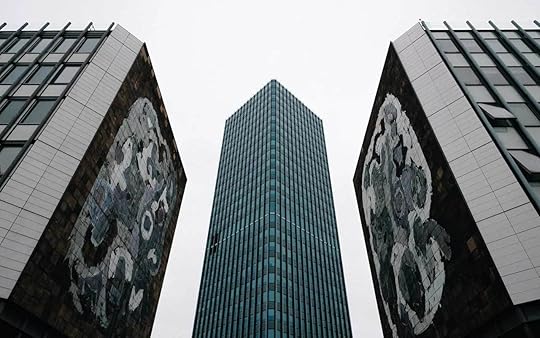
Buildings of the Campus Pierre & Marie Curie, Paris, France
So how can we use Ars Combinatoria to help us turn Mercury into the first station of our memory palace? What magnetic imagery can we use to help us remember?
One way is to think of Madame Curie.
Maybe they’re working on a cure. MerCURy.
Venus
Have you heard the current debate about whether scientists have discovered signs of life on Venus… or if it’s just a weird chemical reaction? Whichever side of the debate you’re on, let’s look at our mnemonic example.

“I’m your Venus.
I’m your fire.
At your desire.”
The song by Dutch Rock band Shocking Blue can help you remember the second planet from the sun.
Earth
Did you know that the Earth is the only planet not named for a Greek or Roman deity? Instead, the germanic word earth simply means, “the ground.”

When you want to remember our home planet Earth, how about visualizing an ear?
Who has ears? Turns out, most living things “hear” in some way or another. But one sticky way to remember an ear is to think about our friends with giant ears — the rabbit.
Mars
Here on Earth, we have earthquakes. But did you know that Mars also has seismic activity? They’re called – not surprisingly – Marsquakes.

Photo credit: Wikimedia Commons
One of the first things that comes to mind when I think about the Red Planet is Martians. And one of the most famous Martians is… Marvin the Martian. If you can hear his voice in your mind, even better!
Jupiter
Jupiter’s Great Red Spot is large enough to swallow the Earth — measuring about 9,800 miles across.

Let’s switch primary colors, from red to blue, and think about juniper berries.
Juniper is obviously not Jupiter, but it’s aurally similar. Plus, if you know Amphitryon (an early Latin play by Plautus) then you know that Jupiter comes down to impregnate Alcmena, and Alcmena’s child is Heracles — and this is the story of the virgin birth many, many years previous to the story of the other virgin birth.
But even if you’re not familiar with ancient Roman theater, it’s still easy to remember juniper = Jupiter, right?
Saturn
Titan is Saturn’s largest moon — large enough, in fact, to have its own atmosphere. The writers at Astronomy.com even went so far as to pose a thought experiment: since an airtight spacesuit is not a necessity on the satellite, what would Titan smell like?
Turns out, “a bouquet of musky sweetness, bitter almonds, gasoline, and decomposing fish would likely fill the air.” Yum.

The Arch of Titus, Rome, Italy
For our purposes, let’s turn to something closer to our home planet. In Titus Andronicus (a Shakespearian tragedy) there’s a character named Saturninus who is Son of the late Emperor of Rome. Saturninus is a gloomy, saturnine character, very full of “Saturn” visual imagery.
And if you haven’t read or seen Titus Andronicus, I highly recommend it. It’s wonderful for a mnemonist — full of dramatic imagery you can use for your memory palaces.
Uranus
Fun fact about the 7th planet… it’s tilted so far on its axis that it basically orbits the sun on its side. This odd orbit means seasons on the planet are extreme and last for about 20 years.
https://www.youtube.com/watch?v=pN_AC...
I know a lot of people might make jokes about Uranus… but for the purposes of our memory palace, we’ll think about Israeli-British illusionist Uri Geller and his spoon-bending illusion.
He’s a great example of mnemonic imagery because he’s larger than life and filled with conflicting emotions. You can have cognitive dissonance with people like him, which makes him perfect for your memory work.
Neptune
Our eighth and final planet (sorry, Pluto) is Neptune, which has one large moon. Triton appears to be an object captured out of the Kuiper belt — and it almost destroyed the entire Neptunian system in the process of getting captured.

While there are a few conceptual abstractions you could use to remember the final planet, let’s keep it simpler.
Remember the Nebuchadnezzar, the hovership Morpheus captains in The Matrix? You can use the Nebuchadnezzar (nicknamed the Neb) to help you remember Neptune — maybe the scene where the Sentinels are attacking the ship.
Now you have all your solar system mnemonics in place, let’s look at how to turn them into a memory palace.
Make a Memory Palace With the Planets in Order
You could make a memory palace with the planets in a number of different ways, but today we’ll put them into a two-room memory palace to keep things simple.

You can even turn each of the planets into what’s called an “eternal station” so that any time you need assistance to help you remember something, you have imagery ready to go.
In the Magnetic Memory Masterclass, I give you better ways to think about this and there are also some drills in the Card Memorization course based on this thinking. Although card memorization seems like an unrelated skill, it actually helps you develop a number of abilities that are useful across the board.
For example, it helps you deal with repetitive words and ideas, as well as information types that have several units of meaning gathered together.
In the image above, you can see each of the planets in their own corner of the memory palace. The whole point of the Art of Combination and memory techniques is your ability to get something going because you’re prepared in advance.
It’s a very fun and simple way you can learn how to remember the planets. When you have a memory palace (or two) you can keep your eternal memory palace open so you can work with it for the rest of your life. Whenever you want to memorize more things, you have images you can work with and tie together.
What Are the Best Ways to Remember the Planets?
In the end, the best way to remember the order of the planets is to use the method that will work best for you — and the one you’ll stick with!
You might decide to use a memory palace or learn how to memorize playing cards. Maybe an acrostic will work best for you. It’s up to you to experiment and find out.
And if you want to learn more about how to create and use a memory palace, be sure to check out my free memory improvement kit. With the memory palace technique, you can memorize pretty much anything you want!
October 27, 2020
How to Remember the Amendments in 3 Easy Steps
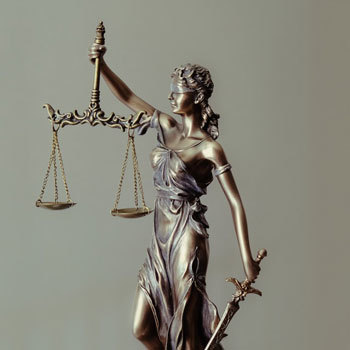 If you need to memorize the 27 Amendments to the American Constitution, you’re probably thinking it’s going to be a lot of work.
If you need to memorize the 27 Amendments to the American Constitution, you’re probably thinking it’s going to be a lot of work.
Instead of indulging in overwhelm, consider the following fact:
For thousands of years, people have been using memory techniques to commit far more than 27 pieces of information to memory.
In fact, there are people alive today who have committed entire books to memory — including the Constitution itself!
So if you’d like an easy way to memorize the amendments, today’s your lucky day. There are at least three ways to do it, and I’ll reveal all on this page by covering:
1. The number rhyme system
2. The pegword system
3. The Memory Palace technique
1. How to Memorize the Amendments Using a Number Rhyme System
Number Rhymes are very basic and visual, which is why they work so well. Basically, you will associate each number with an object or person.
For example:
1 is a bun
2 is a shoe
3 is a bee
4 is a door
5 is a hive
The trick is to make sure you make each rhyme and image much more specific than an abstract old bun.
For example, I think of the buns you used to get with Kentucky Fried Chicken when I was a kid. (I don’t eat fast food anymore and haven’t for over a decade to protect my memory. I eat these foods that improve memory instead.)

To create a number-rhyme system, get out a piece of paper and make a rhyme for each digit. Make sure you think about specific shoes and bees that you have a special connection with.
Then, when you think of the first amendment, which discusses “Freedom of Religion, Assembly, Petition, Press, Opinion, and Speech,” imagine that specific bun you’re thinking of with a gag on it while it’s trying to give its opinion.
If “one is a bun” doesn’t work for you, try RhymeZone for ideas. You might choose the sun, or combine a bun with the sun. For example, you can imagine your opinionated bun having his rights burned up in the sun.
Let’s try the second amendment: “The freedom to bear arms.” You have to admit that it’s pretty unforgettable to imagine your favorite pair of shoes signing its application forms to purchase a new handgun.
What about something a bit more abstract, such as the third amendment: “No military in your home except in wartime”? Provided you have some specific bee or bees in mind, this should be no problem.
For example, I think of The Bee Movie, starring Jerry Seinfield. I have him and a swarm of bees dressed as soldiers trying to enter my home. I meet them at the door with the third amendment to remind them they’re not allowed here.

Is this method the best?
It certainly is effective because it tells you the number of the amendment, but it’s also a bit random. It’s also relying solely on the strength of two levels of association: a rhyme and an object or cartoon character.
But what if you have to memorize the exact amendment word for word?
We’ll get to that with the Memory Palace technique, but first, let’s consider a similar alternative to the number-rhyme approach.
2. How to Remember the Amendments with a Pegword System
Pegwords are very similar to number-rhymes. It’s just that there’s no rhyme and people tend to use the alphabet.
For example, let’s say you’re memorizing the fourth amendment, “No unreasonable searches or seizures.”
Let’s use the letter D and assume that we’ve covered the first three amendments with A, B, and C. With this approach, you assign a person or object to each letter.
For example:
A = Al Pacino (insisting he has the right to speak freely)
B = Ben Kingsley (registering for a firearm)
C = Cookie Monster (refusing the military entrance into his home.

For the fourth amendment, you might assign Dracula to the letter D and imagine him explaining to a cop that he has the right to be free from search and seizure without good reason.
If we assign E and Ernie from Sesame Street to the fifth amendment, you could have him almost incriminating himself and then catching himself just in time.
Can you spot the weakness with this technique? It has all the same problems as the number-rhyme approach — but in this case, you have to know the number of each letter of the alphabet.
That said, you could combine the two. In fact, if you did, you would quickly learn the number of each letter of the alphabet.
For example, if you decide that six is drumsticks, you could have a philosopher like Michel Foucault for the letter F in your association. He could be pounding away on drums and chanting that he has “the right to a speedy and public trial.”
If you would like lists of all my images for number-rhymes and the alphabet, please see my post on using the pegword method.
3. Using The Memory Palace Technique to Remember the Amendments
A Memory Palace is probably your best bet. It will allow for a few things:
It helps you have a “canvas” for leaving your images so you can find them later
You can remember the number of each station by using a number-rhyme
You can use Recall Rehearsal to harness the serial-position, primacy, and recency effect to get all of the amendments into long term memory rapidly
To create a Memory Palace, draw a home or office where you have space for more than 27 different items. This is important in case you need more space.
For example, if you want to memorize the amendments verbatim, you’ll notice that some are much longer than others.
Personally, I would probably link together two or more Memory Palaces for this task, as I have done in this illustration of one of my favorites.
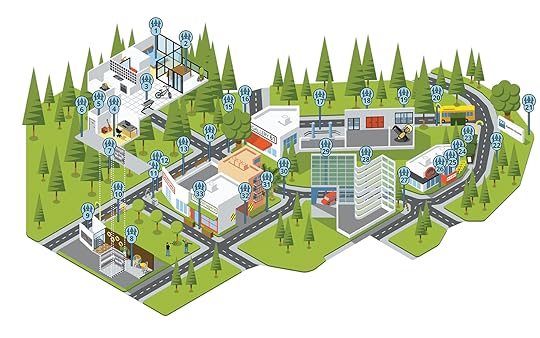
This Memory Palace has more than enough room for all the amendments. I actually think of it as three separate Memory Palaces that just happen to be linked. Magnetic Stations 1-9 are one Memory Palace, 10-20 another, and 21-33 the final MP.
I know all of this can be a bit overwhelming to learn in one goal, so please consider getting my training program. It’s free!
Let’s take a look at a few more examples.
Memory Palace Example for the Amendments
We’ve already covered the first six in this tutorial, so let’s imagine that we’ve got them covered and start with the seventh amendment on station seven.
Station seven is the elevator in a building. It says that Americans have “the right to a trial by jury in civil matters of $20 and over.”
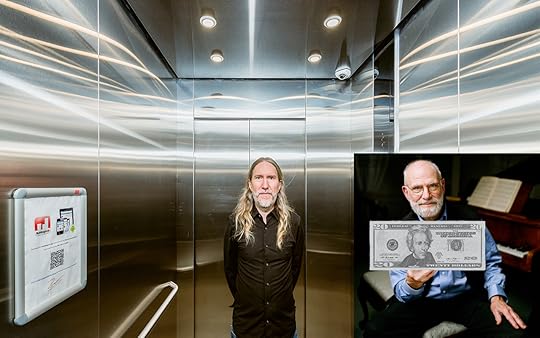
In this elevator, I would imagine Oliver Sacks handing a twenty-dollar bill to a jury of my peers.
Why Oliver Sacks? Because he’s my symbol for 07 using a 00-99 PAO (Person Action Object) system. It’s a bit more advanced than number-rhyme and alphabet memory systems.
It’s built from something called the Major System or Major Method. Basically, you pair every digit from 0-9 with a consonant. Then when you put two digits together, you make a word.
Here’s a handy chart that lays out the system:

Since 0 = s and 7 = k, I chose the word “sack.” Since that’s a bit limp and lame without an actual reference, I landed upon Oliver Sacks to make the association more concrete.
Then, when I needed to memorize the eighth amendment, I would simply proceed to the next station in the Memory Palace and use the symbol for 08 to memorize “The right to fair fines and bail. No cruel and unusual punishment.”
(08 = Shiva in my system but there are many other options.)
But what if you need ways to remember the amendments line for line?
How to Memorize The Amendments Verbatim
So far, I’ve described ways to memorize the amendments that will give you the gist of each one. But what if you need an easy way to remember the amendments all word-for-word?
No problem!
In fact, it’s with verbatim memorization that the Memory Palace technique really shines. Because you have a lot of space, you can make an image for each and every word.
For example, my image for 09 is memory expert Brad Zupp. The ninth amendment is “Individual Rights. Rights that are not in the constitution are still rights delegated to citizens.”

I might imagine that Brad is a Star Wars character who feels “individual” about his rights. To remember specifically that the next sentence starts with “rights,” I would imagine the Wright brothers from NoMeansNo playing on a knot instead of a stage to remember, “Rights not…”
Then I would have the Dell computer logo crashing down on a poster for the movie, Citizen Kane.
Listen, these images might make zero sense to you. Your mind is probably filled with a completely unique set of popular culture images.
But the principles behind these techniques are the same: You make a word-by-word association and lay out the mental imagery on a wall or along some kind of journey.
How to Remember The 27 Amendments For the Long-Term
Now you might be thinking, “Hang on, memory man! All that associating… it’s going to take forever!”
Actually, it won’t.
Studies have shown that using flashcards will get you about a 44% retention rate, whereas using the elaborative encoding process I’ve just shared should get you a rate of 85%.
That rate will go up or down depending on your willingness to experiment with the techniques.
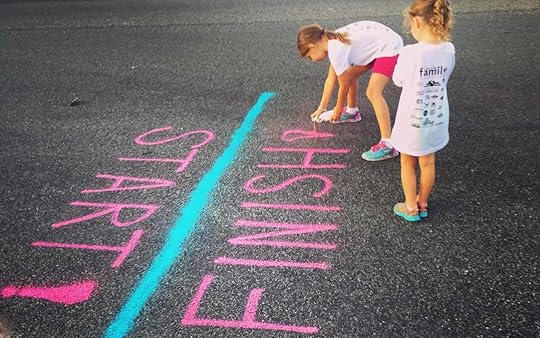
But it’s not just about making these funny associations. You also need to actively recall each of the amendments. For that, the Memory Palace helps you do this in a highly refined way.
First, I suggest you encode only 5-10 at a time. Then, visit each one in a strategic pattern:
Forward and backward
Start at the end and move to the beginning
Start in the middle and move to the end
Start in the middle and move to the beginning
Skip the stations (i.e. recall 1, 3, 5, 7, then 8, 6, 4, 2, etc)
Why go to all this trouble? Because this harnesses the power of serial positioning, the primacy effect and the recency effect. Without it, you’re likely to only remember the first and last amendments you place in the Memory Palace.
FAQ: What About Flash Cards and Spaced Repetition Software?
You certainly can use these, but I would recommend you still have a Memory Palace and the association process in the mix.
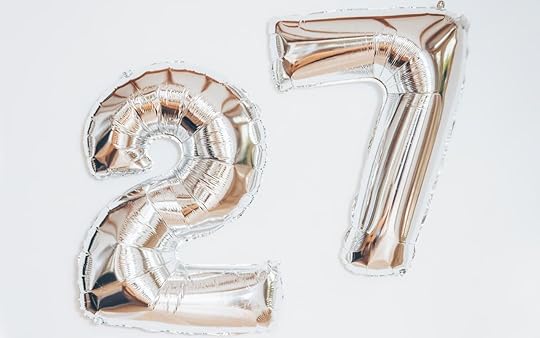
One way or the other, the brain needs active recall to learn and it’s so much easier when you have a Memory Palace and associative imagery in the mix. You don’t have to take my word for it either. Memory expert, neuroscientist, and memory athlete Boris Konrad will offer you similar setup steps.
Now, we know from his autobiography that Benjamin Franklin sought out better forms of memory. And we also know that he was a staunch defender of the freedom to speak your mind.
And he also wrote this about how he committed certain styles of writing to memory:
“I took some of the papers, and, making short hints of the sentiment in each sentence, laid them by a few days, and then, without looking at the book, try’d to compleat the papers again, by expressing each hinted sentiment at length, and as fully as it had been expressed before, in any suitable words that should come to hand.”
This is an important clue to our final lesson:
If you really want to get all 27 amendments locked permanently in your memory, write them down from memory. Literally test yourself and use active recall.
First, call the Memory Palace back to mind.
Then call back the association you made.
Finally, allow the association to bring back the target information.
Then write it down.
You don’t have to recall it in order. If you can’t think of one immediately, simply move on to the next that you can and troubleshoot later.
Troubleshooting All The Ways To Memorize the Amendments
It’s very unlikely you’ll get through the process without making a mistake.
The trick is to learn from our mistakes.
If you miss a word, or an entire amendment, calmly assess the situation.
Were your associations concrete enough? Again, I suggest you always push yourself to make it more specific.
For example, if you use heaven for seven, ask yourself: Is “heaven” really a concrete image in your mind? Can you use characters from Highway to Heaven to make it more immediate? Or do you know a friend or celebrity named Evan you can use?
Likewise when it comes to a Memory Palace. If you can’t remember which spot comes next, you need to remove the self-criticism and dispassionately assess the situation.
Have you spent enough time creating a proper Memory Palace? Have you completed the free course offered on this site to help you through it?

Is Any Of This Really Quick And Easy?
Yes!
I’ve seen people memorize far more than this amount of information in just days. It just comes down to a willingness to learn the techniques in a spirit of experimentation.
Of course, some people get the knack for it faster than others. But anyone with skills enough to read this page can also memorize as much information if they want. And they can even learn to use memorization techniques to go much faster.
But even if it takes a bit longer, so what? It’s the amendments we’re talking about — well worth it!
In sum, it’s an incredible journey to memorize a list so central to the freedoms promised by one of the greatest nations on earth. My hat’s off to you for committing yourself to it and if you have any questions, just post them below.
October 26, 2020
Kevin Trudeau’s Mega Memory: A Complete Review
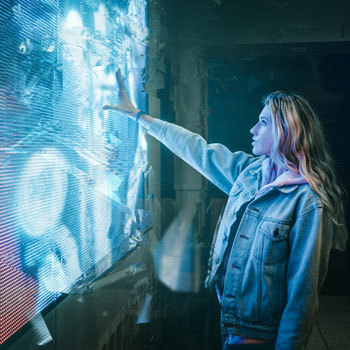 If you’re looking for a review of the Mega Memory program, you probably just want to know: Does it work?
If you’re looking for a review of the Mega Memory program, you probably just want to know: Does it work?
The answer is yes and no.
If you’re a beginner, this book will almost certainly help you understand the basics of association and develop a peg system.
If you’re an intermediate user of memory techniques, it might give you a few insights.
If you’re an expert mnemonist, it probably won’t add much to your skillset. But you might find it useful and interesting for historical purposes. You can also consider it a chance to review core concepts and potentially think about the memory techniques from another angle.
But will it “work”?
No.
And that’s because memory techniques are not things that do anything. It’s people who put the techniques into use.
Just as no machine or dumbbell at the gym builds any muscle until the owner of the muscle puts the weight into motion, no memory technique does anything unless you put it to work.
When you put any memory training to work, you can almost certainly expect:
Better memory
Increased focus and mental clarity
Boosts in confidence
But it’s you who does the work to learn the techniques and put in the practice. (How could it be otherwise?)
With this core principle in mind (one that is true of all memory courses on the planet), let’s take a deep dive into what Mega Memory is and think about whether or not it’s worth your time.
Here’s what this post will cover:
Mega Memory by Kevin Trudeau: Everything You Need to Know
What is Mega Memory?
What Mega Memory Covers
Who is Kevin Trudeau?
Mega Memory Review: Can It Help You With Memory Improvement?
Mega Memory by Kevin Trudeau: Everything You Need to Know
First, we’ll clarify what exactly Mega Memory is (and is not).
What is Mega Memory?
It’s important to know that there are multiple versions of this memory training. These include:
Multiple print editions
Multiple audio editions (Mega Memory and Advanced Mega Memory)
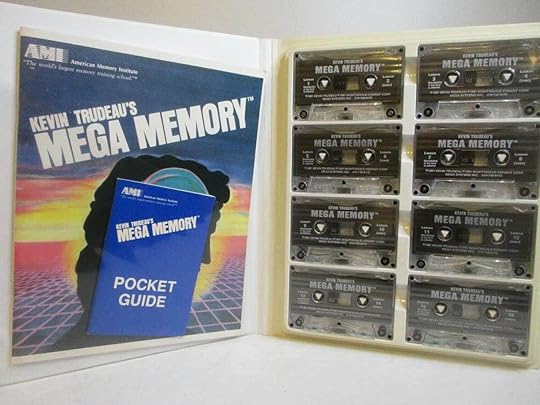
Some of the audio editions may or may not include:
A workbook
A pocket guide
In this review, I’ll be referring to the print and audio editions.
For all intents and purposes, they are essentially the same. The audio program has the benefit of the speaker’s enthusiasm and asides, though some listeners may find these aspects tedious and even grating.
The book opens with a very important list of acknowledgments and thank yous.

I point this out because the creator, Kevin Trudeau, never claims to have invented or even innovated any of the techniques taught in the book. Instead, he places himself in the position of the learner, which is what all of us should strive to be for the course of our learning lives.
Unfortunately, many reviewers often state that there is “nothing new here.” Such assessments are problematic for two reasons:
If you don’t know these techniques, they are definitely new to you.
There are innovations to the memory techniques all the time. Individual readers might not be able to spot them due to a lack of context.
It’s dangerous to pay attention to such reviews because you simply don’t know what you don’t know.
This raises the question: What can you expect to know about memory after you go through Mega Memory?
What Mega Memory Covers
The program opens with tips on how to make the most out of the learning experience. You are given ground rules, which are generally good to follow for many courses of study.
These pointers include:
Go through the lessons in order
Study in short blasts
Take breaks
Schedule your practice
Remove distractions
Do not eat before reading or practicing
Trudeau also asks you to self-test your “teachability.” This is important because some people just aren’t willing to do what it takes to get results from memory improvement courses.
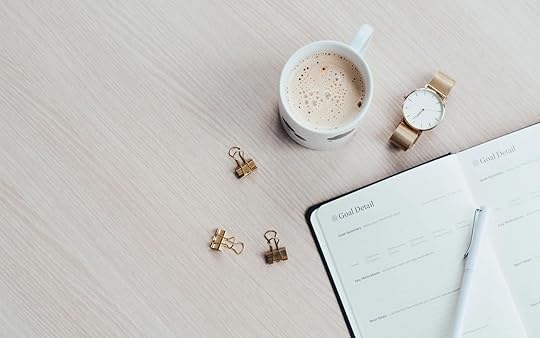
This point links to an insight given by David Berglas in A Question of Memory. In this book, Berglas describes memory not as a “unitary mechanism” or thing — instead, memory is a behavior. It is something we do and how we do memory matters a great deal.
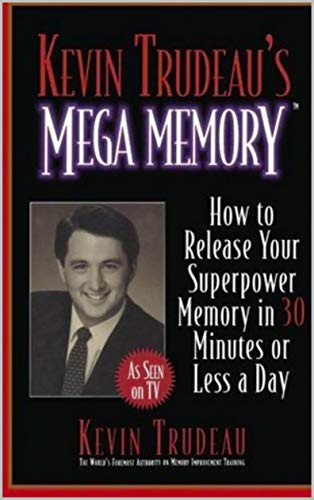 Next, you’ll learn:
Next, you’ll learn:
How to make associations
How to chain associations together (sometimes called linking)
Creating and using the pegword method
Creating various lists that amount to using your body and home as a Memory Palace
Applications for the memory techniques including , numbers, vocabulary, and spelling
How to memorize playing cards
You also get lists of words for stimulating what amounts to your own 00-99 object list based on the Major System.
You also get an extensive “name guide” to practice with — something that might be useful for even the advanced practitioner who wants to practice in a park without the distractions of a smartphone or other device that goes online.
Who is Kevin Trudeau?
Unfortunately, many people missed the opportunity to learn from this book due to a few colliding issues:
According to Wikipedia, the FTC required Trudeau to stop marketing Mega Memory using infomercials. He made claims about photographic memory that are obviously false because photographic memory isn’t real. (Many uninformed members of the public have learned a false definition of eidetic memory as well, compounding the problems of gullibility in the market.)
Trudeau was sent to prison for a variety of reasons, including contempt of court.
Many people make the ad hominem fallacy that because of these troubles, the memory training Trudeau produced must be suspect or in some way inferior.

As mentioned above, Trudeau hasn’t created any of these techniques or introduced anything “new.” It’s impossible for his behaviors to reduce the value of the techniques because they were never his in the first place.
Will Kevin Trudeau enter the memory market again when he gets out of prison? It’s hard to say, but a recent report tells us that he’s been in touch with a judge to try and figure out how he’ll survive once he’s a free man again.
Mega Memory Review: Can It Help You With Memory Improvement?
The beginner who reads the book or completes the audio program thoroughly should walk away with a solid set of memory skills to practice.
If you follow the program and bring your own information you need to memorize, the book should deliver what it claims. But if you struggle, that’s no reason to panic. The next book or program will help fill in any gaps you still have — as will practice.

When you’re ready for more, I’d suggest some of these Memory Palace books. Frankly, I don’t think anyone should hang their success on just one book or course.
In philosophy, you wouldn’t expect to understand Aristotle after reading just one book, and it’s not reasonable for most people to expect to understand everything after completing Mega Memory.
In fact, as you’ve seen, Trudeau himself lists several teachers he’s benefited from.
The fact of the matter is this:
Who you choose as your teacher does make an impact. You need to connect with their voice (written or spoken) and the level of detail they bring needs to connect with where you currently stand with your skills.
Whereas some aspects may be too pedestrian for you, others may be too challenging. This is normal.
Some people will interpret Trudeau’s enthusiasm on the audio version as “hype.” A more charitable interpretation is to recognize that these techniques do take some effort and many people lack initiative, energy, and even the courage to take action.
As one reviewer on Goodreads named Philip puts it, Trudeau “could charm a bird into paying for flying lessons. It is great to experience as rhetoric alone.”
This comment is apt because memory techniques have historically been connected to the art of persuasion. I demonstrate this with reference to the marketing of memory in detail in my analysis of Rhetorica Ad Herennium:
https://www.youtube.com/watch?v=X3rts...
Fortunately, memory is not as tough a sell as it used to be, given the success of the World Memory Championships, Moonwalking with Einstein, and various specials like Memory Games on Netflix.
https://www.youtube.com/watch?v=Gve0Y...
But even with all of these wonderful and encouraging demonstrations of the absolute validity of memory techniques for each and every one of us, many still need the tools of persuasion to get started and keep going with the practice.
At the end of the day, Mega Memory is probably best considered as a product for beginners. But there’s no guarantee you’ll put in the effort needed to get the results. This means that the decision is not whether it “works” or not.
There’s an abundance of evidence going back thousands of years that memory techniques are effective. This means that the real question is whether YOU are going to learn and practice the techniques.
As I often like to say, carpe diem but caveat emptor. If you can get your hands on Mega Memory, I’d say you’ll do just fine and be able to spot patterns with how other memory training products can help you out.
Perceiving the patterns could itself be the boost you need to start applying the techniques consistently.
So what do you say? Is this a training you want to try? Or have you already gone through it and put its presentation of the techniques into action?
And if you want a more in-depth look at how you can use memory techniques to improve your memory, pick up your free copy of my memory improvement course today!
October 23, 2020
How to Visualize Clearly And Effectively: 7 Proven Tactics
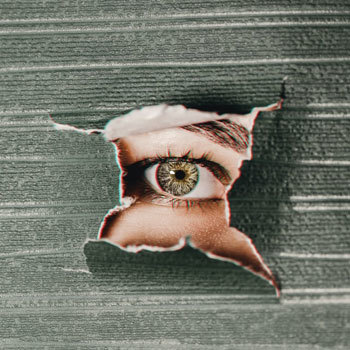 If you want to know how to visualize clearly and effectively, you probably already have a vision statement written.
If you want to know how to visualize clearly and effectively, you probably already have a vision statement written.
You have written out a vision statement by hand, haven’t you?
If the answer is “no,” then I’m here to tell you that your visualization is neither clear nor complete. And that means you’re still struggling to achieve your goals.
If you’re still not living the life you want, study this page carefully.
You’re about to learn how to visualize images in your mind that will make it impossible not to become the architect of your dreams and fantasies.
Better?
You’ll also learn how to be the builder of your success.
Here’s what this post will cover:
How to Visualize Clearly: 7 Tips For Success
1. Don’t Stop At The “Visual”
2. Have a Written Vision Statement
3. Mind Map Your Vision
4. Create a Treasure Map
5. Do a Visualization Meditation
6. Journal Daily
7. Plan Your Action Steps
Visualize Images Based On Existing Competence
How to Visualize Clearly: 7 Tips For Success
Ready to learn how to visualize better? Here are 7 pointers.
1. Don’t Stop At The “Visual”
Far too many people think that “visualization” is about seeing clear pictures in their minds.

Not only is this single-sensory form of dreaming your way to success extremely limited — it also fails to really help you access all levels of your experiential brain.
Instead, you want to tap into every possible sensation you can muster. That’s why I want you to memorize this simple acronym:
KAVE COGS
These are the eight most powerful senses of multi-sensory visualization I know:
Kinesthetic
Auditory
Visual
Emotion
Conceptual
Olfactory
Gustatory
Spatial
Every time you visualize images, make sure you’re also feeling, smelling, tasting, hearing, and emotionally experiencing your goal.
2. Have a Written Vision Statement
A written vision statement is a simple, 2-5 page declaration of what you want to achieve in your own words.

Words are just as “visual” to your brain as images, with each word acting like an interpretable picture at the conceptual level.
Plus, by writing out your vision you symbolically and literally signal to your brain that you value your goals. You “see” yourself taking action and it becomes a lived experience.
Plan to write multiple vision statements. It is a repeatable activity and each time you it will serve you well. So too will these additional 5 visualization exercises.
3. Mind Map Your Vision
A mind map, on the other hand, is more visual in the traditional sense. Here, you will use a combination of words and drawings to let yourself conjure up your goals at a glance.

I was very fortunate to learn mind mapping directly from Tony Buzan. In fact, I mind mapped the Magnetic Memory Method mission under his personal tutelage back in 2016 and still follow the vision you see represented above.
I find this approach very useful because mind maps are big, colorful and you can place them in your work area.
This keeps you focused on the goal — and helps ensure you never forget what you’re working to achieve.
4. Create a Treasure Map
To use this technique, which is similar to mind mapping, open a Word document and search for images that represent your goals.

In the above example, I made it my vision to publish multiple books, travel the world, and play in a band. So I added images that represented these outcomes.
Within a few short months, using a combination of all the techniques you’re reading now, I was out on the road — and I’ve never looked back since.
The trick is to print out a couple of copies and keep them where you can see them.
5. Do a Visualization Meditation
To experience a visualization meditation, sit on the floor, on the side of your bed, or on a chair. Close your eyes and bring your goal to mind using KAVE COGS.

I like to go through each experiential mental image in that exact order because it’s easy to remember the stack.
For example, if you want to master playing a musical instrument and have learned how to memorize a song, start with kinesthetic sensations.
That means you might imagine the feeling of holding your instrument or the stage beneath your feet as you step in front of an audience.
Then hear the music flowing out of you. See the stage next, including the lights, the audience, and your fellow musicians. Let the emotions roll through you and carry on with the rest.
Powerful stuff, isn’t it?
Add a walking meditation to the mix and the other varieties I teach in The Victorious Mind: How to Master Memory, Meditation and Mental Well-Being and watch the results unfold.
6. Journal Daily
When I was learning how to visualize effectively, journaling was key.

In fact, I still journal a “Perfect Present” vision statement every day. It goes like this:
I wake up healthy and strong. The worth of my being is great. I live in joy and abundance. I meditate, exercise and eat well. My passive income exceeds my lifestyle by 10x. I write and play music every day in joy and abundance.
Again, writing things out makes your action visible to you. And you can run through KAVE COGS as you write out your goal.
Not only is writing out a vision statement scientifically viable, research groups at schools like Notre Dame have been using texts formalized by other scientists and researchers (like Janel M. Radtke) going back to 1988.
7. Plan Your Action Steps
I took a snap of this Japanese Proverb outside of a cafe in Vancouver, British Columbia:
Vision without action is daydream. Action without vision is nightmare.

In reality, there’s nothing wrong with daydreaming — so long as you’re willing to accept the suffering that comes from not achieving realistic goals.
That’s why we need to break our goals down into milestones and individual steps or micro-actions we can take. These need to be charted out over time.
As much as possible, these steps should be automated, or optimized, so they take place without the need for willpower or motivation.
For example, every week I release new blog posts, videos, and podcasts. There’s a system behind how everything happens. It’s not exactly flexible, but not rigid either.
It just serves the needs of my vision statement for the Magnetic Memory Method.
And I plan, and replan, as you should too — including the time to meditate and visualize using KAVE COGS.
Visualize Images Based On Existing Competence
One last power tip:
A lot of people visualize goals beyond their abilities.

For example, I am in no way accepting a “limiting belief” when I realize that I am not going to become a world-famous musician.
My musical competence was good enough to play on quite a few stages in quite a few bands and do some recording. But I’m just not going to put in the time and effort to reach that “next level.”
And that’s why when I worked to visualize clearly what I wanted to achieve musically, I placed it within the realm of what I could actually accomplish.
That way, my efforts to join a band and get out on the road were not wasted. I could learn songs quickly and perform them to a decent standard.
But my psoriatic arthritis flared while I was on the road. No amount of visualization was going to make my hands performance-ready for recording on the album with The Outside I’d been preparing to produce with them.
But I could help out with the lyrics and even write a short vocal cameo I had on the album. In other words, I didn’t give up on the vision: I pivoted.
Expand Your Existing Competence
Sometimes you can visualize beyond your competence. For example, I’m a decent writer and it was great that I could get The Victorious Mind to reach #1 in three bestseller categories on Amazon as an independent author.

But I don’t want to be independent forever. So I have to visualize with radical honesty my existing competence and my dream of having a traditional publisher help with a book that will reach a larger audience.
Then, I have to visualize all the skills I need to add in order to reach that next level — and write them out. Next comes the plan with all the milestones and individual micro-actions.
Finally, the 7 visualization steps listed above are needed to make everything as clear and doable as possible. And it’s clear to me that the number one thing I need to expand is reaching out to editors and mastering relationship building with them.
Sure, all of this takes mental strength. But it’s worth pursuing every ounce of grit you can get, and so I ask you:
What can you do to visualize your existing competence related to your bigger goals right now?
Never forget, every moment you aren’t taking action and visualizing based on the strongest possible multi-sensory models, you are leaving so much of life’s precious riches behind.
Hopefully, by now you have more than a few solid ideas that will make your visualizations clearer than ever before. And if I’m missing any, let me know. I’ll visualize them into the mix!
And be sure to pick up your copy of The Victorious Mind: How to Master Memory, Meditation and Mental Well-Being and put the meditations in the book to use on your journey to visualize clearly and effectively!
October 14, 2020
How to Use Guided Visualization to Diminish Stress and Anxiety
 It’s hard to find a decent guided visualization, isn’t it?
It’s hard to find a decent guided visualization, isn’t it?
That’s because too many people focus on the “visual” part, when really good guided meditations always include multisensory experiences.
Without integrating the visual with the kinesthetic, auditory, emotional, conceptual and senses of space, taste, and smell, using your mind’s eye on its own can never be as powerful as what I imagine you want to achieve.
So let’s look into this topic a bit deeper and give you a guided visualization and tips on how to build your own.
Here’s what this post will cover:
What is Guided Visualization?
The 3 Key Benefits of Guided Visualization
3 Guided Visualization Exercises That Reduce Stress and Anxiety
Other Forms of Guided Visualization You Can Try
What is Guided Visualization?
Humans have been guiding each other’s mental states since the dawn of language. Plato’s Dialogues are filled with stories like the Allegory of the Cave and the Tao Te Ching uses many metaphors to teach us how to live better in the world.

Although these texts are typically read (or heard as audiobooks), they rely upon similar techniques in order to guide us to certain conclusions.
Perhaps Franz Mesmer (1734-1815) is the person who really started working with guided visualizations. Mesmerism evolved from “animal magnetism” and the use of magnets on the body to a practice that involved the “mesmerist” staring, waving hands, and using language to try and induce healing for the sick.
We now classify mesmerism along with other pseudosciences like phrenology and alchemy.
According to Sabine Arnaud in On Hysteria: The Invention of a Medical Category between 1670 and 1820, it is possible that Mesmer’s greatest influence was on other practitioners, not patients. He was known to tell people, “Go forth, touch, cure.” This suggestion directly influenced the development of hypnotism.
Although discredited, to this day people still use pseudoscientific techniques that resemble Mesmer’s strategy, including bracelets, crystals, and forms of touch they believe to have an effect on the “animal magnetism” of the human body.
Sigmund Freud (1856-1939) later developed the hypnotism spawned by Mesmer and used mental imagery in psychoanalysis.
Inspired by his teacher, Jean-Martin Charcot, Freudian concepts of “free association” encouraged patients to generate and describe their own mental imagery.
They were typically guided by the analyst’s encouragement to speak “whatever comes to mind,” and overcome their inner objections or “resistances” to sharing their thoughts and fantasies.

Guided visualization really hit its stride with figures like John Grinder and Richard Bandler, who arrived in the world of hypnosis around the same time the mass production of audio and video distribution became possible.
As these men worked on developing neuro-linguistic programming (NLP), they drew heavily upon the ideas and therapeutic work of Milton H. Erickson.
One of Erickson’s main observations was that not all people respond to the direct commands of hypnosis. For example, direct commands will involve statements like, “When I end the count of three, you will close your eyes. One… two… three…”
As an alternative to this kind of command structure, Erickson developed a number of “passive” or “indirect” statements that led individuals to follow commands as if it was their own idea.
“Whenever it feels right, you may like to close your eyes, if you feel your lids growing heavier along with the sound of my voice.” These statements not only make you feel as if it is your choice to follow along, but they are multi-sensory.
For the purposes of this tutorial, guided visualizations involve a mixture of:
Direct suggestions (or commands)
Indirect suggestions (or passive commands)
Multi-sensory images and feelings (like feelings, the images of eyelids growing heavier and references to sound)
Now you have a brief history, let’s look at the benefits you’ll get.
The 3 Key Benefits of Guided Visualization
Given the questionable history of these techniques when it comes to real results, are there any benefits to practicing any kind of visualization?
Yes!
There’s a catch, however. There always is. Perhaps a personal story will help explain the benefits and encourage you to experiment with an open mind — but not one so open that your brains fall out.
1. Defining Outcomes and Creating Action in the Absence of Motivation
When I was completing my Ph.D., I absolutely did not want to write my dissertation. I spent a few years gathering research, but my graduate supervisor told me something that completely deflated my ambition.

Whereas I had big plans to become a professor who would teach my heart out and write many books, Jamie felt called to give me a wake-up call.
We were walking along Bay Street in Toronto on our way to a cafe. He told me that academic jobs were drying up, and even if I published dozens of articles, it was going to be nearly impossible for me to get a tenure-track job.
At that moment, I puffed out my chest and swore that I would build my own university if that’s what it took. Now, it turned out I sort of have built my own university on the Magnetic Memory Method website, but shortly after his talk, I fell into a slump.
Fortunately, I’d studied hypnosis and even gotten certified by the National Guild of Hypnotists through the Ontario Hypnosis Centre. (I didn’t take the course to become a hypnotherapist, but rather as part of my dissertation research on friendship.)
Thanks to the training, instead of moping around and doing nothing back in my Manhattan apartment, I recorded a guided visualization for myself.
My script included multi-sensory ideas, images, and feelings that helped me mentally experience the accomplishment of finishing my Ph.D. and visualization taking the specific steps that still needed to be done.
2. Increase Positive Thoughts
Day after day I listened to my own voice each morning before sitting down at the computer.

I no longer have the exact script, but it was written in the present-tense and went something like this:
As I sit at the keyboard, I feel the ideas and words flowing effortlessly through my fingers. With each keystroke, I can see my degree materializing in a frame on the wall. The sound of typing inspires electric energy as I look forward to submitting the finished document. The more I focus on the task at hand, the more my interest and energy grow and the taste of success fills my mouth. I enjoy the smell of victory as I continue to organize and refine my ideas, making sure to pay attention to the journey and cherish every moment.
This form of guided visualization helped me center myself, focus, and just get the job done.
I believe it works because it follows the immersive, multi-sensory KAVE COGS formula:
Kinesthetic – words like flow, feel, energy
Auditory – words like sound, typing
Visual – imagining the degree itself, phrases like “look forward”
Emotional – words like victory, cherish
Conceptual – reference to the ideas I was working on
Olfactory – phrases like “the smell of victory”
Gustatory – references to taste
Spatial – sitting at the keyboard, the act of organization
Would I have written my dissertation without all of this “self-hypnosis”?
Perhaps, but I doubt it. And if I had, it would have been a much more miserable experience than it was. But because I had a guided visualization to get myself started, I was able to immerse myself in the task with a positive outlook despite my supervisor’s grim outlook.
3. Reduce Stress
In reality, my supervisor was both right and wrong. I never did get a formal academic position, despite having many publications.

However, I did wind up winning a Mercator research grant that kept me very busy teaching Film Studies in Germany.
And that was not only on the strength of my dissertation and the fact that I got my doctorate done. It was also because I knew how to be calm, cool, and collected when applying for such grants.
In fact, I used a very similar guided visualization before going to defend my dissertation and before getting each and every teaching job I’ve had in the years since. It’s a very simple visualization meditation that involves a bench, a lake, and a bike.
There are many more benefits. For example:
Many athletes use visualization to increase their performance.
Entrepreneurs use business plans to help create vision statements for their companies.
Students use mental images of their future careers to help keep them moving forward.
The trick is that you need to visualize accomplishments that are within your current range of skills.
For example, if you have no skills in developing websites, you can visualize yourself as a millionaire enjoying the beach until you’re blue in the face. But it’s very unlikely to happen.
However, if you create a visualization that helps inspire you to complete a web development course, this simple and realistic practice can provide what amounts to a simple ego boost.
Exactly the kind I needed to shut up my monkey mind and its objections and keep my focus on the tasks at hand. I still use such visualizations to this day!
But please note that I also always catch myself when visualizing — I make sure that I have the competence to actually accomplish what I’m visualizing. If I don’t, I correct the vision so it’s within the realm of my current abilities.
Or, I make sure the goal involves taking a course or completing a practice regime that will get me the competence I need for the next milestone along the way to the goal.
3 Guided Visualization Exercises That Reduce Stress and Anxiety
Another form of visualization I’ve benefited from involves guided meditations that tackle discomfort arising from stress and anxiety. Unfortunately, I’ve had my fair share of both, particularly during high school and university.

Important Disclaimers:
Never use guided meditations while driving or operating any kind of machinery.
Use of the following exercises is not to be considered medical advice or as an alternative to seeking professional medical help. Even if you don’t think you need it, leaving stress and anxiety unchecked is not advised.
I personally have always sought proper, medical help even when I’ve explored alternative therapies.
To make the most out of these guided meditation examples, I suggest you:
Rewrite each script in your own words
Include as many KAVE COG elements as possible
Use the present tense
Add in your own goals
Record each script you create in your own voice
Listen to your guided visualizations while seated or lying down
Experiment with having your eyes open and closed
Here are 3 of my favorite guided meditations.
1. The Field and the Sky
As I breathe deeply, in and out, I center my mind on an expansive image of a field. I walk lightly along a path through its center, my hands brushing the soft tips of wheat. I feel each and every one, relaxing deeper and deeper as I move towards an opening in the field beside a tree.
I sit beneath the tree and feel a comfortable breeze. I lay on my back and stare into the wide-open blue sky. With each breath, I feel more and more connected with the earth, the wind, and the colors of the sky. I pull the cool blue into my body, and circulate the sky itself through my body. The air flows through my body, and as it does I clench my fists, hold and release them. Each time I clench my fists, my body relaxes and I feel more and more connected with the earth and the sky.

2. The Volume Adjuster
With each and every breath, I allow my ears to tune deeply into the sounds around me. I connect with each sound as a physical sensation. I notice the volume and feel the sound as sensations deep in my ears. Each sound and feeling relaxes me, flowing in synchronicity with my breath.
As I breathe and listen, I imagine a music recording studio form around me. On a monitor, I see a graphic readout of the sounds in the world around me. On a control station, I reach out and feel a volume dial beneath my fingers. I control each and every sound, and as I make the sounds around me louder and quieter, I feel more and more deeply relaxed.
3. The Mirror
In a room, I breathe deeply and walk towards a full mirror. As I look at my feet, they become deeply relaxed. With each breath I take, my eyes travel up my body. My calves, thighs, hips all become deeply relaxed. I realize that my body and the body in the mirror are becoming relaxed in uniform, and this realization relaxes me even more deeply. My belly, chest, hands, arms, and shoulders all relax deeply, just by looking at them in the mirror, twice as relaxed as I share the relaxation with my image.
The muscles in my face all relax as I allow the tension in my jaw and cheeks to release. All tension around my temples and forehead completely falls away, each breath melting the tension and stress out of my body. When the moment is right, I breathe deeply and step into the mirror, doubling my comfort and relaxation yet again as I fuse with the perfect realization of myself as a deeply and completely relaxed person, feeling whole and complete in every regard.

4. BONUS: The Infinity Visualization
As I breathe in and out, I become aware of my awareness. I notice my consciousness as a substance flowing through time. To become more intimate with it, I ask the following questions without expecting any specific answers. I accept anything that arises, including ‘I don’t know.’
When did my consciousness arrive? Where exactly is my consciousness? Can I find the easternmost point of my conscious awareness? The westernmost point? The southernmost? The northernmost?
As I breathe and relax, I imagine an infinite line projecting out into space in front of me. I imagine another projecting behind me, more to the left and the right and directly upwards from my head. Although I accept that infinity is impossible to imagine, I feel each of these lines extending outward without end.
On the line projecting in front of me, I place a hotel. In this hotel are infinite rooms, each filled with a relaxed version of myself. The more I think of each version of myself extending into infinity, the more relaxed I become. When I am ready, I make room for myself in the hotel by asking every other version of myself to move one room down. All of infinity moves to make space for me, and as I move into the room, a new me emerges from the infinite line behind me to take my place, making me deeper and deeper relaxed.
Note: The hotel part of this exercise is inspired by David Hilbert’s Grand Hotel Paradox.
Other Forms of Guided Visualization You Can Try
Not everyone finds guided imagery easy. Although I’ve always allowed myself to “go along” with visual suggestions, I don’t actually see images in my mind. Many people with “aphantasia” don’t.
But that has never stopped me. I’ve used recordings from others and watched videos. But ultimately, writing and recording my own has worked by far the best.
If you don’t feel confident about making your own recordings and want to buy programs from others, many will do. It’s just important that you align your goals with reality and take everything with a grain of salt.
There are a lot of sharks out there — and, as with my dissertation, all the visualization in the world wasn’t going to get it written. I still had to show up and turn my research into sensible sentences and paragraphs that fulfilled the requirements of my degree.
Other kinds of visualization you can try involve mind mapping. For example, set a goal for relaxation. Then, start by drawing a central image of what that state is like for you. From there, draw a number of branches and free-associate. The process itself is deeply relaxing – especially if you find task-oriented projects like language learning anxiety-inducing.
You can also seek out adult coloring books. I even created one for you called the Creativity Kickstarter. It’s a fun and easy way to throw on an episode of your favorite podcast and relax through a kind of visualization that is guided in a completely different way.
I highly recommend coloring while listening to any positive audio programming that relates to goals you want to achieve.
Just remember: Everything you visualize should always start from the basis of your ability to achieve the goal in question. That way, you simply cannot fail.
October 11, 2020
5 Memorization Techniques That Help You Learn Faster
 Are you looking for the perfect set of memorization techniques?
Are you looking for the perfect set of memorization techniques?
Yet, you keep getting frustrated?
Well, don’t blame yourself. Because it is frustrating, isn’t it?
I mean… everywhere you go people are using different terminology.
Linking…
P.A.O. …
Mind Palace…
Roman Room…
Journey Method…
Mnemonic Peg System…
How Real Are The Promises Of Memorization Techniques
For Students And Mature Learners?
Very real!
But we still have to deal with a lot of different terms. I mean, lets face it:
All those terms sometimes make the whole memory improvement world feel a bit like a hoax.
After all, even if science backs up the memorization techniques we talk about on this blog 100%…
Why the heck can’t people get their terms straight!?!
Well, let’s get the painful truth about the world of memorization techniques out of the way:
Whether you want to know how to memorize a speech fast or are desperate for memorization techniques for studying…
You’re going to come across a lot of different terms.
That’s just the way the world of memory improvement ticks (and other professions that rely on terminology). Things have been this way since humans started developing memorization techniques to help them survive.
And it’s only getting more complex!
But in reality, a lot of those techniques are essentially the same.
Each and every one has a location-based element in one way or another.
That means that all memorization techniques are spatial.
And as Thales, the first person in the West to be considered a philosopher and scientist in the same body, said:
Megiston topos hapanta gar chorei
(Space is ultimate for it contains all things)
That’s the very cool thing about the discoveries here at the Magnetic Memory Method Podcast.
Once you understand this and practice with memorization techniques from this basis, your results will accelerate.
And the complexity eases down, even if there will still be ins and outs to consider.
And if you’re interested in more about the history of where mnemonics come from to help humans deal with complexity and how they used space to do it, please check out Lynne Kelly’s The Memory Code.

Just as we do here on this blog nearly every week, Lynne’s book will show you exactly how learning these techniques will help you deal with extreme complexity in modern life.
My course which you can subscribe to at the bottom of this post will take you through everything too. It’s free.
For now, let’s persist and do our best to get past all the confusing terminology.
Let’s talk instead about the…
5 Memorization Techniques You Can Use To Learn Anything Faster
1. The Memory Palace Technique
Ultimately, the memorization technique that will help most people the fastest is the Magnetic Memory Palace.
You’ll hear this technique called by different names, such as the “method of loci” or the Roman Room.
All you’re doing with this mnemonic device is turning a familiar location into a mental “journey.” You then place associative images along this journey so you can revisit them later according to a specific pattern.
This pattern is known as “Recall Rehearsal.” It lets you get information into long term memory quickly and with a high level of accuracy. This outcome happens because the Memory Palace technique lets you harness the power of:
The Serial Positioning Effect
The Primacy Effect
The Recency Effect
The Von Restorff Effect
Using all of these techniques combined can take a bit of practice, but if you’ve ever wanted to know how to to improve focus, this combination of techniques is the ultimate way to do it.
Of course, it helps too if you know about motivation in learning too, such as intrinsic and extrinsic motivation.
2. Multi-Sensory Association
Imagine walking into an exam that you know you will pass with 100% certainty.
It’s totally possible if you have the right memory techniques on your side. Like the Memory Palace technique.
(In this episode about Giordano Bruno, Scott Gosnell talks about how you can create a Memory Palace out of the examination room itself.)
But in order to use the Memory Palace well, you have to know how to place the best possible associations inside of them.
To do that, you need to look at the spellings and sounds of words and then creating links or stories in your Memory Palace.
This website is packed with mnemonic examples showing you how association works inside of a Memory Palace. Have a look at these details tutorials for a number of visual examples:
How to Memorize Anatomy
How to Memorize the Periodic Table
How to Memorize the Presidents
How to Memorize a Song
How to Memorize a Speech
How to Memorize Vocabulary
3. Acronyms
As one of the supporters of the Magnetic Memory Method once said:
Use the right memorization technique for the job or go H.O.M.E.
The acronym stands for:
Huge
Outcomes
Means
Exercising
And let me tell you, if you want to know how to remember things you read or learn a new language, you’ll want to use acronyms often.
4. Memory Techniques For Language Learning
Did you know that there are truckloads of proof that bilingualism is a brain and memory health strategy?
Not only is language learning an ongoing source of mental fitness, but you get the benefits of more socialization.
You can literally meet more people and get to know them more deeply.
This exposure to people enriches the brain with chemicals.
And the best part is that you can use the Memory Palace technique to help
However, you also want to add what I call The Big 5 of Learning.

This is based on the levels of processing effect, first identified in 1972 by Craik and Lockheart.
To benefit from it, you want to memorize vocabulary and phrases using the memorization techniques outlined above, and also:
Read
Write
Speak
Listen
From memory and into memory
Without using all of these levels, you won’t be getting enough of what scientists call “active recall.” It’s absolutely essential to making sure the techniques you choose work flawlessly.
5. The Major System & The Pegword Method
Start with the foundations of memorizing individual words and you will quickly learn to memorize entire phrases.
From there, you’ll want to add the ability to memorize numbers too.
The Major System is fun and easy to learn. It lets you turn any number into a word. Start by committing this simple system to memory:

Then practice turning two-digit numbers into words. For example 22 could be nun and 35 could be mail. It’s ideal to come up with a few words per two-digit combination.
After that, it’s just practice.
Next, add the pegword method. This memorization technique will let you have an association for each letter of the alphabet. You can also use the number of each letter of the alphabet for some “next level” learning at speed.
How To Benefit From The Abundance Of Memorization Techniques
Yes, there are a lot of terms out there as more and more people teach their favorite memorization technique.
But now you don’t have to get lost in the terminology.
Just find memory training and memory improvement courses you resonate with and trust.
Give those memory experts your attention.
Follow the instructions and recommendations.
Experiment.
You’ll be amazed by the memory improvement you experience.
Better:
You’ll be thrilled by the additional benefits using memory techniques brings.
Are you ready to be thrilled? Let me know in the discussion area below and then grab the Magnetic Memory Method Improvement Kit to get started today!



